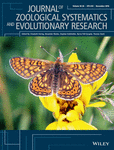Journal list menu
Export Citations
Download PDFs
Cover Image, Volume 56, Issue 4
- Page: i
- First Published: 04 October 2018
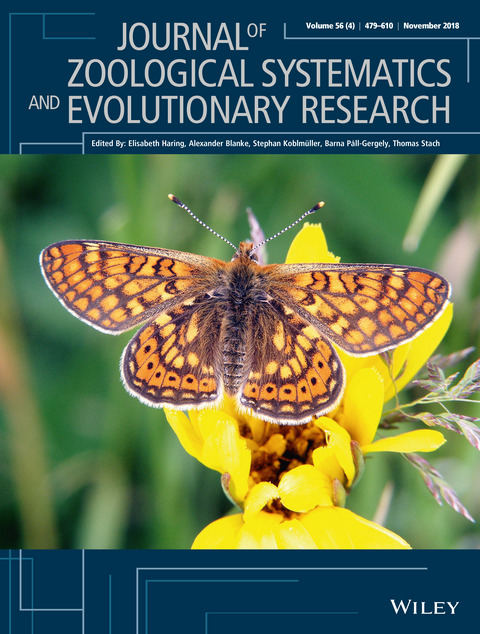
The cover image is based on the Original Article Surprising diversity in the Pannonian populations of Marsh Fritillary (Euphydryas aurinia, Lepidoptera: Nymphalidae): Morphometric and molecular aspects, by Katalin Pecsenye et al., DOI: 10.1111/jzs.12227. Photo credit: Zoltán Varga.
Lack of congruence of genetic and niche divergence in Podarcis hispanicus complex
- Pages: 479-492
- First Published: 26 March 2018
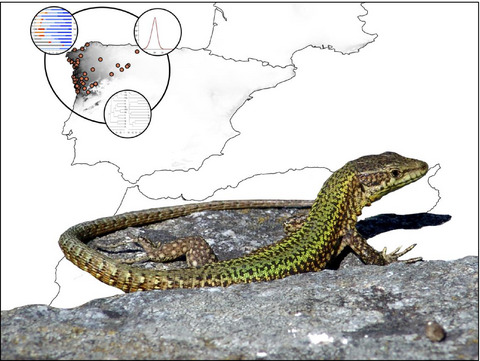
Our study highlights the importance of rainfall levels in shaping distributions of Podarcis hispanicus complex lineages. Most forms have distinct realized climatic niches and do not follow the pattern of mitochondrial divergence. Genetic divergence across this group most likely occurred in allopatric conditions with significant niche divergence. Competition after secondary contact is suggested by the occurrence of niche overlap between lineages exhibiting parapatric distributions. Together, these mechanisms are limiting current geographic distributions and restricting the existence of extensive contact zones.
Molecular and morphological divergence in a stygobiont gastropod lineage (Truncatelloidea, Moitessieriidae, Paladilhiopsis) within an isolated karstic area in the Mecsek Mountains (Hungary)
- Pages: 493-504
- First Published: 22 March 2018
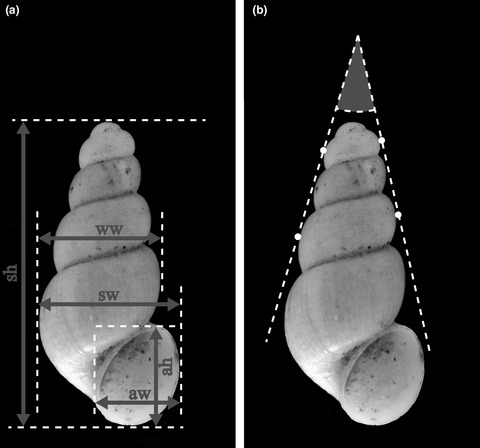
We studied two Paladilhiopsis populations of an isolated Hungarian karstic area with two hydrologically separated cave systems. The investigated populations differed both morphologically and genetically: we found strong divergence in the relative width of the shell and a 6.4% divergence in COI. This provides strong support for the presence of two distinct taxa. In one of the caves, we found representatives of both haplotypes (and phenotypes), which can be explained by secondary contact after an allopatric divergence.
Leaving the tropics: The successful colonization of cold temperate regions by Dolicheremaeus dorni (Acari, Oribatida)
- Pages: 505-518
- First Published: 23 March 2018
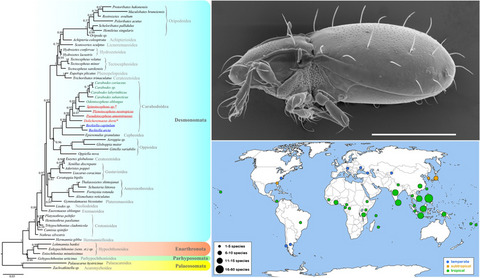
The oribatid mite genus Dolicheremaeus represents a very diverse taxon that predominantly occurs in the subtropics and tropics. Dolicheremaeus dorni is one of very few species that has managed to colonize temperate habitats. This species is associated with trees or tree habitats and is a generalist feeder. A morphological and molecular genetic investigation confirmed the distribution of this species in Central and Southern Europe and revealed specific geographic clades and haplotypes for each population indicating low gene flow between populations.
Surprising diversity in the Pannonian populations of Marsh Fritillary (Euphydryas aurinia, Lepidoptera: Nymphalidae): Morphometric and molecular aspects
- Pages: 519-532
- First Published: 11 May 2018
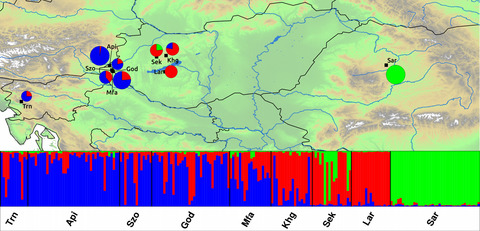
The aim of this study was to analyze the structure of genetic and phenotypic variation in the Euphydryas aurinia populations of southeastern central Europe using molecular markers and 13 morphometric traits. Molecular markers revealed a basic East–West differentiation among the populations which was further structured in the western part of the study area due to the effect of diversifying selection. The phenotypic differentiation among the western populations showed a geographic cline in parallel with increasing level of fluctuating asymmetry.
Diversity among peripheral populations: genetic and evolutionary differentiation of Salamandra atra at the southern edge of the Alps
- Pages: 533-548
- First Published: 06 April 2018
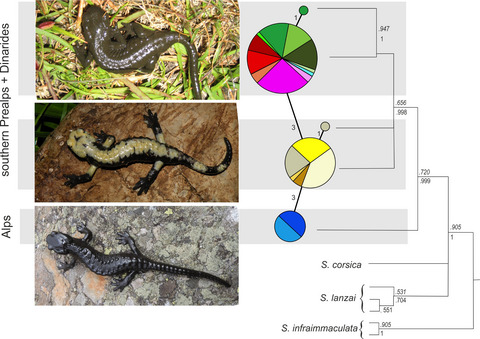
We compared multiple peripheral populations of the cold-adapted, fully terrestrial Salamandra atra along the southern Prealps, by different mitochondrial and nuclear markers. We found at least seven isolated populations, with variable levels of differentiation and different amount of within-population genetic diversity. Both yellow-patched and fully melanistic populations across the southern Prealps have lower genetic diversity than remaining populations and belong to an ancient lineage that is also found in the Dinarides but did not contribute to the postglacial recolonization of the Alps.
Phylogenetic relationships within a patagonian clade of reptiles (Liolaemidae: Phymaturus) based on DNA sequences and morphology
- Pages: 549-569
- First Published: 06 April 2018
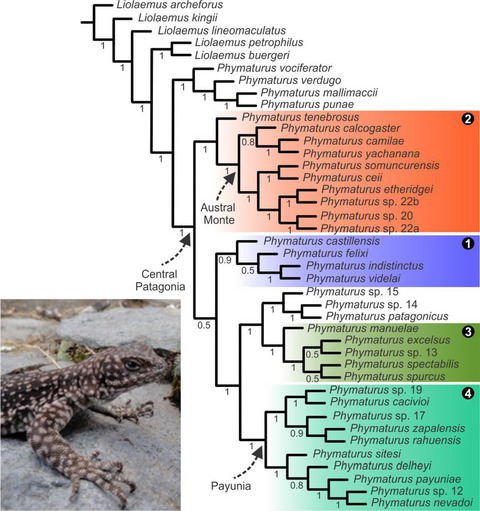
Based on a data set built combining information of mitochondrial and nuclear DNA plus morphological characters, we investigated the phylogenetic relationships within the patagonicus group of Phymaturus. We identified four main clades for this lizard group and revealed congruencies and incongruences with the previous studies. We show the phylogenetic information given by each partition/marker and how they contribute to relationships found in the total evidence analysis. We discuss the phylogenetic position of Phymaturus manuelae, Phymaturus tenebrosus, and Phymaturus patagonicus. Phymaturus nevadoi (©Fernando Lobo).
Just a Vietnamese goldfish or another Carassius? Validity of Carassius argenteaphthalmus Nguyen & Ngo, 2001 (Teleostei: Cyprinidae)
- Pages: 570-578
- First Published: 06 April 2018
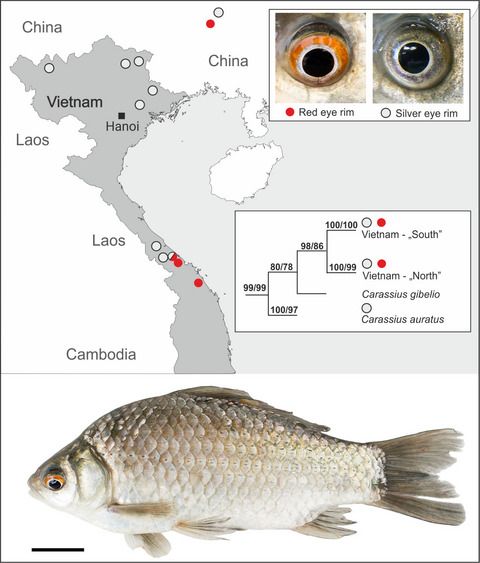
An analysis of the genus Carassius in Vietnam based on mitochondrial and nuclear genes recovered two separate genetic lineages. One corresponds to Carassius auratus, and the other represents an independent evolutionary unit. We tested whether it corresponds to the species described as Carassius argenteaphthalmus. The main determining character, the eye rim color, did not distinguish two clades. Considering the imprecision of the original description, the name of C. argenteaphthalmus is considered as nomen dubium.
Systematics and historical biogeography of the Aphanius dispar species group (Teleostei: Aphaniidae) and description of a new species from Southern Iran
- Pages: 579-598
- First Published: 14 May 2018
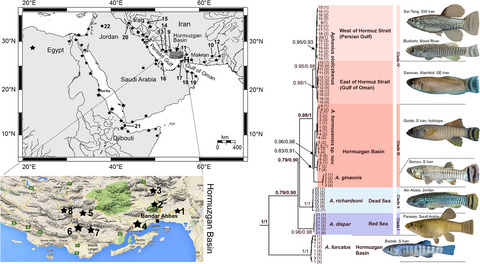
Reconstruction of phylogenetic relationships among the Aphanius dispar species group based on three mitochondrial genes in this study revealed four distinctive species within the species previously identified as A. dispar, one of which is the new species A. hormuzensis. The factors that promoted this diversification include vicariance due to the middle Pliocene disconnection between the Red Sea, Dead Sea, and Mediterranean Sea; middle to late Pliocene dispersal from the Dead Sea to the Persian Gulf; and Pleistocene global sea-level fluctuations.
Biogeographic variation in skull morphology across the Kra Isthmus in dusky leaf monkeys
- Pages: 599-610
- First Published: 07 May 2018
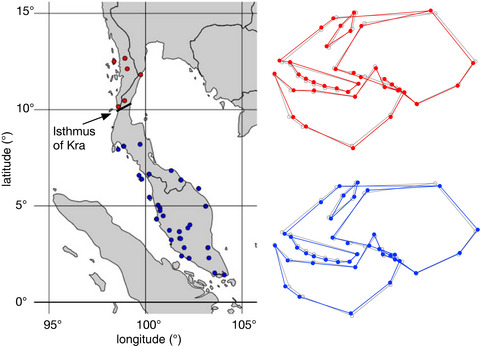
Biogeographic variation of the skull in dusky leaf monkeys across the enigmatic Isthmus of Kra was examined. Although size and the majority of shape variations are regionally homogeneous, statistical analyses showed that some of the skull shape differed disjunctively between the populations from the north and south of the Isthmus. Dusky leaf monkeys have possibly experienced a vicariance due to habitat constriction around the Kra; this divergence then may have been obscured by subsequent habitat recovery and gene flow between populations.




